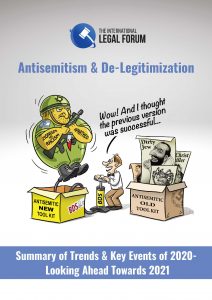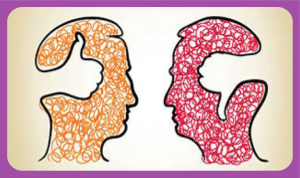
By now, one would think that the field of visual communications and its impact on persuading others especially in the litigation arena has been examined and explored to a point of sheer boredom. To me this is so self evident; it is validated every day at trial, ADR or even at client marketing presentations. It is brought home by our media and social interactions. It is the symbolic message of art, music and mathematics. Yet, I am asked by attorneys and their clients why visuals and graphics are necessary, useful or, quite frankly, cost as much as they do. It appears that one more article needs to written to explain, based on the latest research in social psychology and persuasion theory, why visuals and visualization is at the heart and soul of how people remember and are persuaded.
Attorneys and clients are entirely right, of course, to stand vigilant in ensuring that trial expenditures are cost-effective. But challenging the use of visuals, specifically and in principle, is curious at best. The question supposes that visuals are some kind of extravagant decorative frill – the jewel-encrusted fuzzy dice of litigation, if you will. In fact, though, the rationale for incisive and forceful graphics cuts right to the heart of effective trial strategy, but it also takes an instructive excursion across the sweep of human experience and back to the beginning of civilization.
Visualization as the key to persuasion and communications, started way before there were computers, technology or even lawyers. Visualization and visual story telling dates back to the cave drawings at Chauvet, Lascaux or La Marche at least 15,000 years ago. Hunters, without the aid of a written language, visually communicated the success of their hunt to other members of the tribe via their “cave visuals”. This may have been necessary both to persuade members of the tribe that they were well protected and to convince competing tribes as to the risk of any altercation.
Page 2 Visuals and Visualization – Samuel H. Solomon – October 2002 © DOAR 2002. All rights reserved. DRAFT COPY
Cave Visual at Altamira Spain
As one traces the history of persuasion one sees that the entire basis of communicating is by visualization and not through simple fact rendering. From the earliest moment that an infant sits on a grandparent’s lap, stories are repeated visually that form in the child’s mind: the wolf’s huffing and puffing as he blows the house down, the story of pourrage too hot, too cold or just right. In fact, most effective human interaction is communicated in a visual way. When describing something with tremendous impact, one verbally visualizes the scene and how it looked in order to persuade someone and transmit the power of the event. One does not just take out a PowerPoint slide and make bulleted series of facts; one needs a visual story that becomes the basis of another person placing in their mind’s eye the same picture …the same concept … the same idea.
Think of how the whole society’s conception and opinion of Vietnam would have been different without the still photographs of the South Vietnamese officer executing his prisoner, point-blank, or the girl running down that rural road, naked and scorched from napalm. How those shots of the flag-raising at Iwo Jima and decades later at the World Trade Center have shaped not only the visual recollection but the whole tone and connotation of the events in the collective mind. The moon landing, the Challenger explosion – these would have been signal events no matter how people heard of them. But there is no denying that they would be thought of much differently had there been no video. Richard Nixon actually won his famous and perhaps decisive presidential debates against John Kennedy among radio listeners. They couldn’t see his prodigious 5 o’clock shadow. They had no idea of the cascade of sweat beads down his lip.
Of course, we are talking about media that are centrally and inherently visual. Then again, so is the law. The word, written and spoken, is undeniably prominent in legal matters, but it is far from the whole picture. Otherwise, how could we explain the ancient and inviolable traditions of robes, powdered wigs and the iconic courtroom layout – not to mention the timeless practices of “cleaning up” the defendant for court; scrutinizing the jurors’ silent expressions and postures; bringing in counsel of a particular demographic to alter the psychological “profile,” so to speak, at the party’s table; the attorneys’ focus on their own gestures, attire and haircuts.
USA Today not only has survived, it quickly established itself as the single most important force in the design evolution of all those newspapers that had hooted at it. The invention of the promotional video, of course, upended all of music marketing forever. These examples will sound dated to some of you. So think of the impact PowerPoint has had on the institution of the business presentation … video games and cassettes, to the meaning of childhood and the experience of being a parent … the World Wide Web, to the experience of using a PC (not to mention the demand for buying them).
What has all this to do with trials? First of all, it would be foolhardy to ignore the media environment in which our jurors find themselves bathed almost every moment they are outside our more-or-less sanitized court environment. It is the petrie dish of stimulus and thought in which they were cultured.
Page 3 Visuals and Visualization – Samuel H. Solomon – October 2002 © DOAR 2002. All rights reserved. DRAFT COPY
The fact is that a visual story will create different images in the minds of different people. Very simply, people will hear the visual story and place in their mind a different image based on their life experiences of the way things work and why stuff happens. They cope with the information overload of a trial by conceptualizing their own mental graphics to make sense of it all, and the verbal equivalents of analogies, metaphors, fables and aphorisms. Those are products of the same impulse to make sense of the world that prompts a wide array of simplified psychological schema, from ancient mythology to today’s conspiracy theories. The important “why” question in litigation leads the listener to determine who to blame and this is at the heart and soul of your case. So the objective confronting a skilled advocate is how to communicate visually with words and images and allow people to see the same image in their imagination and contemplate its consistent meaning.
An antler and bull: Are they friends or foe?
This is no small task and it becomes even more critical given society’s trend towards visual communications as oppose to the written word. Today’s society is returning to the cave drawing approach to the way stories are told. Television, movies and digital pictures have all become critical and essential elements of communicating our social, spiritual and personal agenda to others. It is the challenge of an attorney to harness the power of story telling, visualization and visuals in order to apply the best possible advocacy to their case.
It is more than just a social nicety. Research documented in Scientific American1 demonstrates through the use of PET scanning devices of the brain, that memory recall is directly related to visualization: that words and visuals are interwoven. When a word is referenced, the image associated with that word arises in the visual cortex of the brain and becomes the key determinant of how someone remembers. We are wired for visuals. We are wired for visual persuasion. It is in our DNA! So the argument should not be whether visuals are important or not or whether someone can afford visuals or its place in the budget. There is no question all professionals in the field of visual communications, regardless of their economic motive, if any, believe that the lack of investment in visual persuasion at the time when one needs to persuade another party is a fundamental defect in the application of advocacy for that engagement. Deficiencies in cases and persuasion
1 Raichle, Marcus E., Visualizing the Mind, Scientific American, April 1994, Vol. 270, No. 4, pps: 58-64.
Page 4 Visuals and Visualization – Samuel H. Solomon – October 2002 © DOAR 2002. All rights reserved. DRAFT COPY
are often compensated by visualization. Visualization gets to the heart and soul of the perception of credibility and preparedness which is the goal of every advocate.
All that was just said does not necessary apply just to jurors, arbitrators and judges; visualization and its impact on persuasion is a general law of human interaction. Scientists believe it is a true universal language and used pictograms to convey a message from earth to alien life forms on many spacecraft. There are, however, additional factors in the area of litigation persuasion that makes the argument even more compelling, especially as it applies to juries. The fact is an arbitration panel or jury is a dynamic involving small group decision making.
A number of key elements become part of the fabric of how people make decisions. This includes the perception of credibility of various members of the panel, their experience and connectedness to the subject matter, their attitude and energy and how they apply themselves in a social setting, known as charisma, and the attitudes, prejudices and values of the people within the group. One of the essential truths of small group decision making is that typically no more that thirty percent of a group “carries the water” for the rest of the group in terms of the decision process and its strength of conviction. These core influencers are the advocates in the jury room and it is the attorney’s task to directly arm their advocates to argue their specific position during deliberation. This is not just about specific facts but the perception and issues of how people look at facts: it is their attitudes, prejudices and value beliefs.2
For the purpose of this discussion the principle is that people will use their values and beliefs to argue positions and in order for an attorney to be successful, one must present a widely accepted “frame of reference” for the facts and case story. An effective and powerful way to arm these juror advocates is to provide a graphical visualization to form a commonality within the group; it’s the cave drawings that the visual wiring of our brain.
Why does this matter? When an advocate argues the case to the jury, they reference issues anchored by visuals. Everyone in the group is now wired to share, in their minds, this similar visual. The visual is a roadmap to convert jurors to the arguments being offered. Without this shared visual, the group is missing the “commonality of shared experience” that allows an advocate to argue most persuasively in the jury room. This, of course, becomes magnified significantly when the other side makes a poor use of visuals and is absolutely critical when both sides are visually persuasive and the key will be which visual story is most powerful.
We have developed a winning technique for developing trial graphics and other litigation approaches. We study jury and mock-jury verdicts and tease out issues, assumptions and arguments instrumental to the outcome. We are particularly alert for questions that jurors regard as important but that were explicitly addressed little, if at all, during the trial. This happens with a frequency that is surprising, even shocking, to litigators. We also key
2 See Solomon, Samuel H., How Jurors Make Decisions, Self Published, August 2002.
Page 5 Visuals and Visualization – Samuel H. Solomon – October 2002 © DOAR 2002. All rights reserved. DRAFT COPY
heavily on the consequences of such independent lines of inquiry. We focus, notably, on attributions of responsibility to non-parties, or for reasons apart from those contemplated in the law and the jury instructions. From this post-mortem we work backward, so to speak, to infer the strategies and tactics most likely to neutralize jury risks and produce a verdict favorable to our client and of course the client’s client. We call this process “reverse-engineering the verdicttm 3”
So the question now before us is: all things being equal, what types of graphics are most persuasive by helping people understand and consider the story of the case from your perspective and these advocates will try to persuade others in the group?
Research shows that visualization used for litigation may be extended and enhanced with the use of “Analytical Graphicstm”. These charting methods help people see the issues and develop a frame of reference compatible to the jury psychology and decision making process at work during jury deliberations. In the end, jurors will be asked to answer a simple questionnaire (verdict form) where all the facts and issues in the case are summarized into a series of yes/no and check-off boxes. Reverse Engineering the Verdict essentially argues that you need to look at the verdict form and ask yourself “What is it that I need to teach jurors?” in order to “reverse engineer” their answer.
Reverse Engineering asks you to closely examine and test the judge’s language and burden of proof to determine how people “filter” this information in applying their experiences, value, beliefs and commonsense. I firmly believe that visual story telling achieves the greatest consensus to complete the verdict form by associating the language, logic and “framing” to the jurors view of the world. These Analytical Graphics are the visual roadmaps necessary to help jurors understand how to fit their world-view and the facts into the verdict form.
There are six archetypes for analytic charts that our research has shown to be essential to persuasion. Let’s take a short tour of each charting method and explain its basic rationale.
• Timeline: Timelines are the most ubiquitous litigation graphic since most stories are told as the events unfold over time. Most children’s stories start with “once upon a time”. Though timelines have been used in litigation for decades, they are often poorly used as just a way of placing all the events on a time ruler. Analytical Graphics suggests that one isolate those events that clearly support the Reverse Engineering issues such as the rhetorical questions in the minds of the jurors when they evaluate the facts of the case.
One may have, in fact, a number of timelines each depicting a different analytic concept. For example, in a medical malpractice case, one of the questions in the jurors’ minds regarding “reasonableness” as a burden of
3 See Bocchino, Anthony J., Dobson, James M. & Solomon, Samuel H., What Juries Want to Hear II: Reverse Engineering the Verdict, Temple Law Review, Spring 2001, Vol. 74, No. 1, pps: 177-230.
Page 6 Visuals and Visualization – Samuel H. Solomon – October 2002 © DOAR 2002. All rights reserved. DRAFT COPY
proof was the other activities the doctor was engaged in at the time of this procedure. A defense graphic may have a timeline depicting only two other client visits during the plaintiff’s treatment. In fact, the essence of this chart would be the lack of elements shown on the timeline. In this case on may consider the option of charting what does not exist. A second timeline may deal, from a defense perspective, with the lack of follow-up by the patient. A unique timeline addresses each issue as determined to be critical during the mock trial deliberations.
• Relationship Chart: Almost every case involves not only the issue of time, but also the issue of the relationships of various parties to the matter in question. It is interesting to note that most stories seem to be either timeline or relationship chart “dominant” – similar to being left or right handed! In other words, either the relationships drive the essence of the case with time sequencing being secondary or time sequencing is the primary case driver with relationships between the parties being secondary. In either case, a relationship chart is essential for many reasons. Most jurors do not remember nor understand relationships between parties and yet it is through relationships that jurors understand why things happen since relationships imply motive. A skilled advocate will want to control the jurors’ perception of motive otherwise jurors will fill in their own blanks and decide on a motive that fits their world-view and oppose the one compatible with the attorneys case story. Relationship charts therefore, become the framework for jurors to understand behavior and the rationale of why things happened the way they did.
• Rating chart: People love to keep score. Early life experiences in sports or school clearly suggests the difference between an A and C student or being in the top or bottom 10% in team scores. Rating is a powerful way to depict the relationship between various elements of an issue and their relative ranking clearly communicates what is or is not acceptable. For example, telling the jury that the corporation met its safety standards is not as persuasive as a report card, derived from key fact witnesses, depicting each element of safety and the A grades. The verbal link would be that “this is a Grade A Company”. A very simple way to visually frame safety for the jury.
• Comparison Chart: A core human perception is to see everything in life in terms of how it compares to others. We are genetically programmed to compare and contrast — we continuously monitor every aspect of our lives, for example, how we compare ourselves, weight, wealth, family and job to others. This same dynamic is at work with all graphics displays. With few exceptions as they relate to basic fact displays, such as documents and illustrations, you should attempt to place every graphic within a basis for comparison. For example, a display of measure for pressure would be placed next to presenting a range of baseline measurements of commonly
Page 7 Visuals and Visualization – Samuel H. Solomon – October 2002 © DOAR 2002. All rights reserved. DRAFT COPY
known objects in order to provide context. Contract language in dispute may show the alternative language that your expert suggests as opposed to demonstrating just the existing language and having your expert “explain” their opinion.
• Process Chart: Many activities involved some form of process, i.e., essentially how things work. Process charts have been used for years but the same rules applies to process charts that already have been mentioned with timelines. Process charts should be directed to helping jurors frame a specific issue and need to have the embedded strategy of the psychological and value-belief frameworks prevalent with jurors within the venue. Though it may be important to explain how a product is produced, for example, a process chart should depict why the product was made in the way that is at issue in the case. For this reason, process charts often incorporate comparison illustrations to drive home this point
• Decision Tree: This powerful and underutilized graphical approach represents how and why decisions are made, in other words, the process of decision making. Decision trees, without a doubt, after timelines and relationships charts, is the most valuable graphics motif, especially in complex commercial cases where jurors have no familiarity with the decision context of the case. Research in commercial cases clearly demonstrates that jurors have minimal context to understand business processes and motivations. It appears that if an attorney can define this context and make it familiar to the jury, the jury will return the favor with loyalty and empathy. For example, jurors would be told about an insurance contract and how it is negotiated. A juror’s frame of reference for negotiating contracts is based upon standardized forms, such as a mortgage loan agreement to purchase a house, which is not compatible to the free wheeling and unstructured way business contracts are developed, very often from scratch. Business contracts involve business priorities and compromises. Nuisances of a contract clearly reflect the intent and objectives of each party’s business requirements. Only by explaining this process via witnesses, supported with analytical graphics such as a decision tree, may one clearly justify of their contention as to equity in a breach of contract case.
We have now covered the why and what of visual persuasion. Let’s turn our attention to the question of when. When is connected to the ultimate advocacy question of how one teaches and reinforces what has been communicated; how one blends the use of visuals and their story into every element of their case from opening to direct, cross to close. How do attorneys want to empower jurors to think and, to in a sense, “step out of the box”? How does one make a presentation interesting through the dynamic use of different mediums. This includes not only boards, PowerPoint or models but your voice, the witness, and you. In the end – at your persuasion “sweet spot” – there is both the “you” that is the truth teller and the “you” that is acting out a visual story to be
Page 8 Visuals and Visualization – Samuel H. Solomon – October 2002 © DOAR 2002. All rights reserved. DRAFT COPY
remembered and persuasive. That visual “you” needs to complement the cases’ cave drawings with the hand motions of the hunt using your “hunting buddy” as prop and the gurgle sounds reflecting the beginning of language. This is more art than science, it is the ultimate skill of an advocate.
The question to consider therefore, should never be why we should use visuals and visualization, but when and how. The question should not be what is the budget and why is this costing so much, but rather what investment must I make in order to maximize the persuasive impact given what is at risk for my client. The investment decision will, of course, be based upon the risk of success and loss; a decision that is part financial and part strategic. This budget decision should be made early otherwise expectations are set and, at the time of trial, it is often times too late to change course and add to the budget to do an effective job on graphics integrated with the research.
Visualizations need not be expensive. In a recent case, the division of royalties was visualized with cups of water in various proportions. Our case became strengthened by adding the argument of asking for “a full cup of justice”. Visualization may involve a decision tree animated in software such as PowerPoint since decision trees are best shown as a 2-d animation. We demonstrated from a defense perspective the decision of the corporate CEO in taking certain investment risks, laid out in a step by step fashion, explaining why the CEO’s risk preference was appropriate. A visualization may be a relationship chart to explain, in a conflict of interest case, how and why certain parties had a vested interest in the outcome of the contract. Yes, there has even been a chart completely black to support medical testimony as to a client’s loss of vision.
Story telling, decision making, shared experience, genetic wiring form the basis of why visual communications is critical and central to persuasion. Though there are many types of visual methods, analytic graphics anchored to jury instructions and the verdict form is a tested approach in arming jury advocates in arguing your case behind closed doors. Your skill and style will know best how to balance it all. This is really your job as an advocate.
Page 9 Visuals and Visualization – Samuel H. Solomon – October 2002 © DOAR 2002. All rights reserved. DRAFT COPY
Fighting Rhinoceroses from Ardeche Region of France
About the Author Samuel H. Solomon, with over 20 years experience in the legal, financial and information technology industries is a CEO, legal strategist, and prominent speaker. His command of the intricacies of trial strategy, visual persuasion and courtroom presentation technology have led to the formation of DOAR. Founded in 1989, DOAR offers litigation and trial support services to law firms and systems integration technology to courts and corporations representing more than 3,000 clients nationwide. Sam’s unique perspective, eclectic education and varied background make him a much sought-after speaker and consultant. His most recent presentations have covered Trial Presentation Strategy, Courtroom Communication, Jury Psychology, Electronic Evidence and Discovery and The Impact of Information Technology on the American Justice System. He recently co- authored “What Juries Want to Hear II: Reverse Engineering the Verdict” in The Temple Law Review. In March of 2000, Sam co-authored PowerPoint for Litigators, the seminal work on the presentation of evidence using technology, published by NITA Press. In 2002, he contributed to two critically acclaimed works: Handbook on Courtroom Technology – A Lawyers Guide and A Judges Guide by NITA Press. Finally, he co- authored the NITA case study: Homestead vs. Manhattan Insurance based upon his extensive trial experience. He is an instructor in the LLM Advocacy program at Temple University Law School and the Hanley Advanced Advocacy Program for NITA. He may be reached at [email protected].







